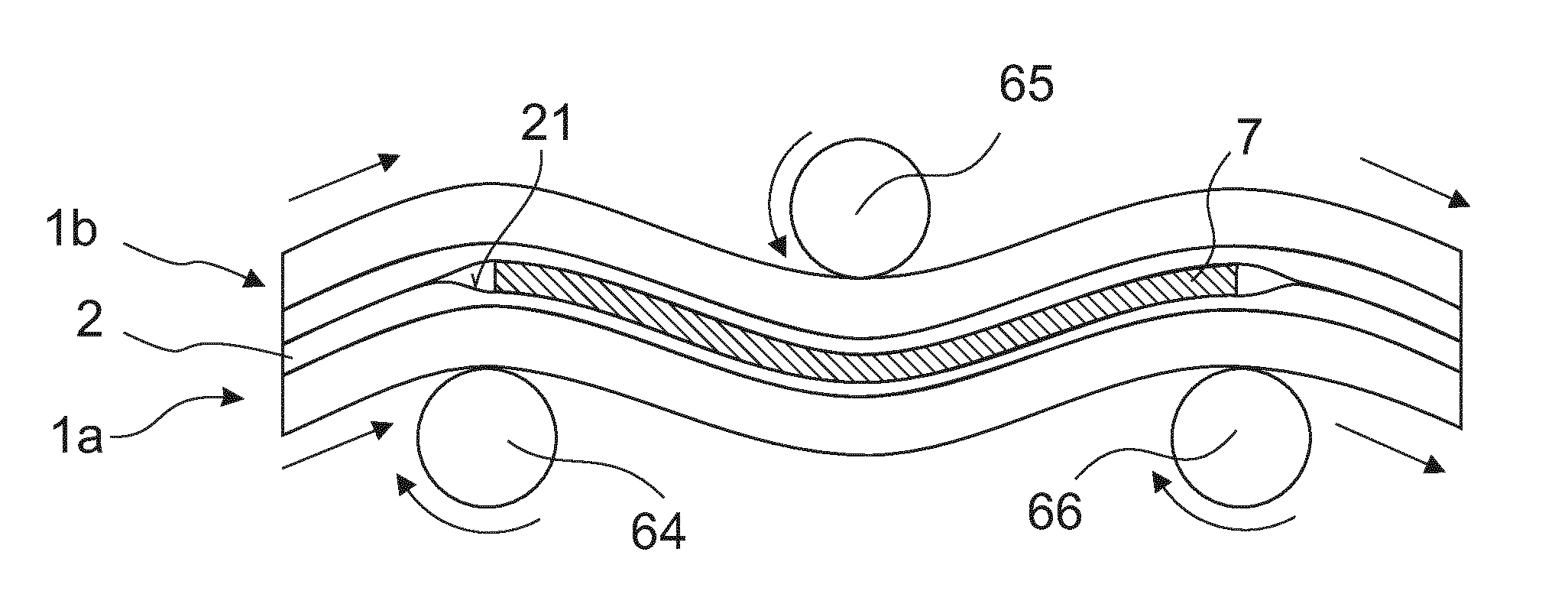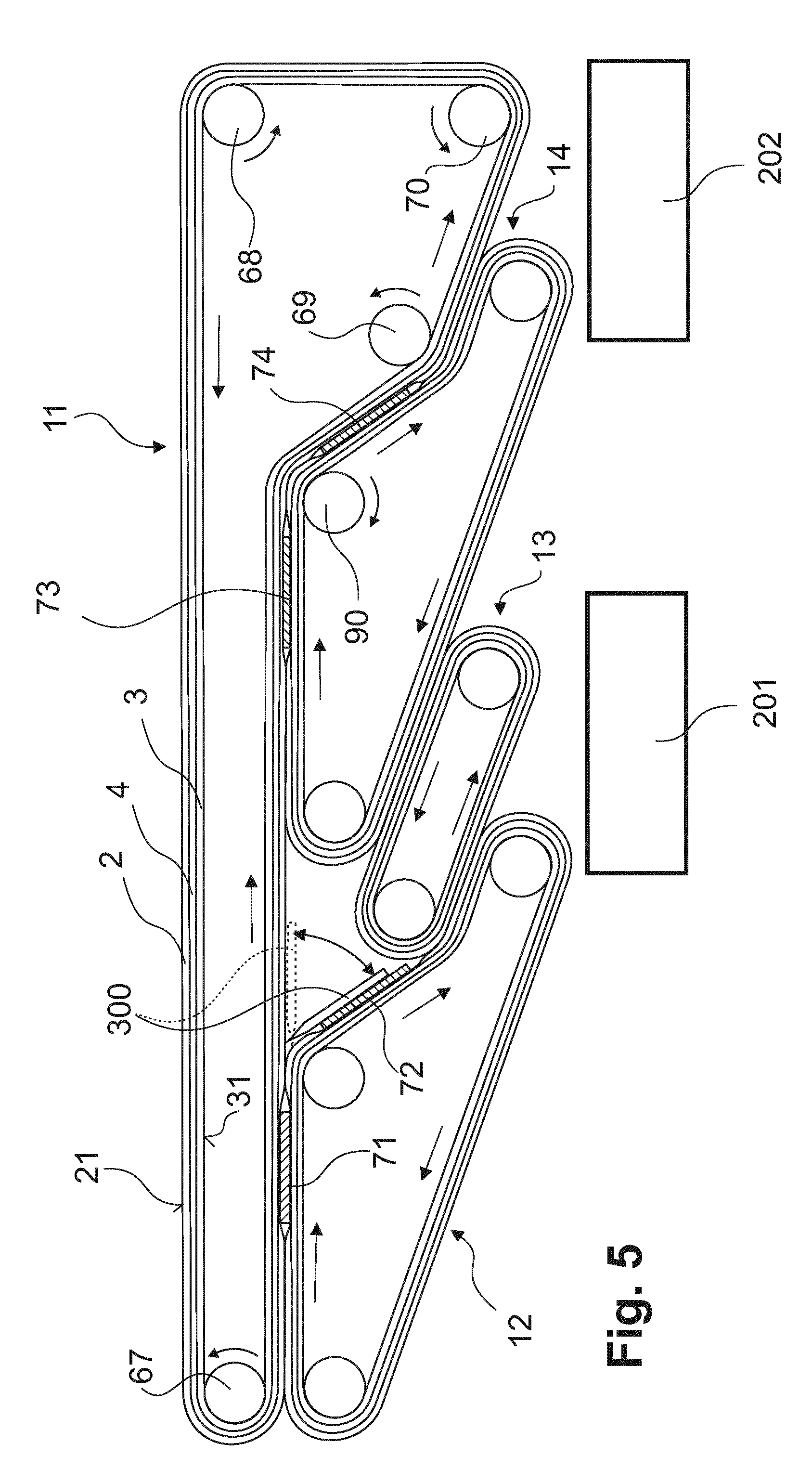Abrasion-resistant belt
a technology of abrasion resistance and abrasion resistance, which is applied in the direction of pile separation, packaging, transportation and packaging, etc., can solve the problems of paper mail, loss of surface roughness, and prone to “glazing”
- Summary
- Abstract
- Description
- Claims
- Application Information
AI Technical Summary
Benefits of technology
Problems solved by technology
Method used
Image
Examples
Embodiment Construction
[0035]The belt of the present invention comprises a first cover layer and optionally also a second cover layer, both consisting of a foam comprising a thermoplastic or thermoplastic elastomer.
[0036]Suitable thermoplastics are e.g. polyolefins (such as polyethylene or polypropylene); poly(meth)acrylates; polymers of vinyl halogenides such as vinyl chloride (i.e. PVC) or vinyl fluoride; polymers of vinyl acetate; copolymers of olefins with vinyl halogenides and / or with vinyl acetate (such as ethylene / vinyl acetate EVA; or vinyl chloride / ethylene / vinyl acetate VCEVAC); thermoplastic PA's such as PA 6, PA 11, PA 12, PA 66, PA 69, PA 610, PA 612, PA 6T, PA 6-3-T, PA MXD6; polyesters such as for example PET or PBT. Among these thermoplastics PVC is preferred for both the first and second cover layer.
[0037]Suitable thermoplastic elastomers can be divided into several classes:
[0038]1) Substantially random ethylene / C3-12-α-olefin copolymers. Examples of the α-olefins are 1-propene, 1-butene,...
PUM
| Property | Measurement | Unit |
|---|---|---|
| density | aaaaa | aaaaa |
| mass fraction | aaaaa | aaaaa |
| densities | aaaaa | aaaaa |
Abstract
Description
Claims
Application Information
 Login to View More
Login to View More - R&D
- Intellectual Property
- Life Sciences
- Materials
- Tech Scout
- Unparalleled Data Quality
- Higher Quality Content
- 60% Fewer Hallucinations
Browse by: Latest US Patents, China's latest patents, Technical Efficacy Thesaurus, Application Domain, Technology Topic, Popular Technical Reports.
© 2025 PatSnap. All rights reserved.Legal|Privacy policy|Modern Slavery Act Transparency Statement|Sitemap|About US| Contact US: help@patsnap.com



